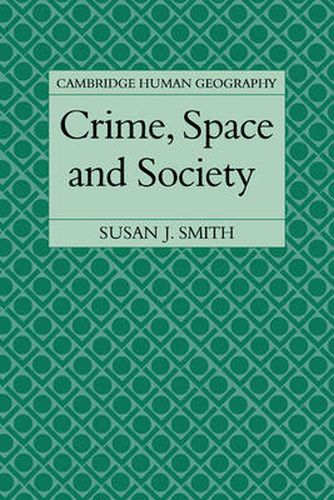Readings Newsletter
Become a Readings Member to make your shopping experience even easier.
Sign in or sign up for free!
You’re not far away from qualifying for FREE standard shipping within Australia
You’ve qualified for FREE standard shipping within Australia
The cart is loading…






This 1986 book offered the first detailed analysis of relationships between crime and social trends in Britain. It is innovative in focusing on the victims of crime, fear and anxiety, as well as on individual and institutional reactions to crime - an emphasis that complements the more usual focus of British geography and criminology on offenders, offences and the built environment. Ethnographic fieldwork is combined with local and national victim surveys to highlight the human consequences of crime and fear against their social, economic and political background. Smith shows that variations in the incidence, impact and social significance of crime reflect the differential distribution of power within cities and regions. In accounting for the relationships between crime, anxiety and the quality of life in urban neighbourhoods, the book makes an interesting contribution to social theory. Amongst a variety of policy-related issues, particular attention is paid to the role of the police in a multi-agency approach to crime prevention and the management of fear.
$9.00 standard shipping within Australia
FREE standard shipping within Australia for orders over $100.00
Express & International shipping calculated at checkout
This 1986 book offered the first detailed analysis of relationships between crime and social trends in Britain. It is innovative in focusing on the victims of crime, fear and anxiety, as well as on individual and institutional reactions to crime - an emphasis that complements the more usual focus of British geography and criminology on offenders, offences and the built environment. Ethnographic fieldwork is combined with local and national victim surveys to highlight the human consequences of crime and fear against their social, economic and political background. Smith shows that variations in the incidence, impact and social significance of crime reflect the differential distribution of power within cities and regions. In accounting for the relationships between crime, anxiety and the quality of life in urban neighbourhoods, the book makes an interesting contribution to social theory. Amongst a variety of policy-related issues, particular attention is paid to the role of the police in a multi-agency approach to crime prevention and the management of fear.